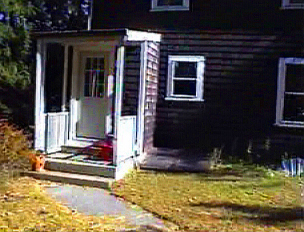|
Museum:
|
Reading
Historical Commission
16 Lowell Street
Reading, MA 01867
Phone: 781-942-6661
E-mail: RHC@ci.reading.ma.us
Reading
Antiquarian Society, located at the Parker Tavern
103 Washington Street
Reading, MA 01867
The Parker Tavern building, built in 1694, is the oldest structure in
Reading still in
existence. It is open May through October.
Boston
and Maine Railroad Depot, located on Lincoln Street in Reading
|
|
Select TV and Radio Stations:
Also see:
List
of Reading area radio stations at radio-locator.com
List
of Boston area TV stations at stationindex.com
|
Boston area:
Public Radio:
Talk
Radio: WRKO
680 AM,
WBZ
1030 AM
Music:
WMKK
93.7 FM, "Mike FM. We play everything."
TV Stations:
|
|
Notable for:
|
One of Reading’s most famous
residents was Bill Russell, best known for being a star NBA basketball
player, was a member of the Boston Celtics from 1956 to 1969. He lived
in Reading in the 1960’s. Because of his race, vandals damaged his
property and a small group of town citizens petitioned against his
residency.
In 2006, a man named Bob Sansone
pushed for a bill to be passed
renaming a portion of Massachusetts State Route 28 that passes through
Reading. He wanted it to be called Tolerance Way, to make up for the
lack of tolerance suffered by Bill Russell. This bill was discussed,
revised and eventually passed by the Massachusetts legislature.
|
|
History:
|
The area of the town of Reading,
MA, was originally settled by citizens of Lynn, MA, who had petitioned
the colony for a place for an inland plantation in 1639. This area was
called Lynn Village and was located on the south shore of what is now
Lake Quannapowitt. In 1644, the settlement was incorporated as the town
of Reading, named after the town of Reading in England. The first
church was soon organized and the first parish was incorporated as the
town of South Reading in 1812. In 1868, citizens of South Reading voted
to change the town’s name to Wakefield.
Citizens of Reading were active
during the American Revolutionary War. One resident, John Brooks, a
doctor, became captain of the Reading Minutemen. He lead them through
the battles at Concord and Bunker Hill. Later as captain in the
Continental Army, he took part in battles at White Plains, Valley
Forge, and Long Island. He would resume his medical practice and go on
to become governor of Massachusetts.
By 1807, the Andover-Medford
Turnpike had been laid through the town of Reading, providing a better
means of travel to Boston. This road later became known as
Massachusetts State Route 28. In 1845, the Boston and Maine Railroad
came to town and improved access to the region.
During the first half of the
19th century, Reading became home to a number of manufacturing
businesses. Reading became known for the production of goods such as
furniture, clocks, organ pipes, chairs, cabinets and shoes. Most of
these industries faded in the latter part of the century.
During the 20th century,
transportation to Boston was provided on the Boston and Maine Railroad
and the Eastern Massachusetts Street Railway, which were later taken
over by the Massachusetts Bay Transportation Authority. This enabled
Reading to become a residential community. Reading also became home to
a variety of other businesses and industries.
|



